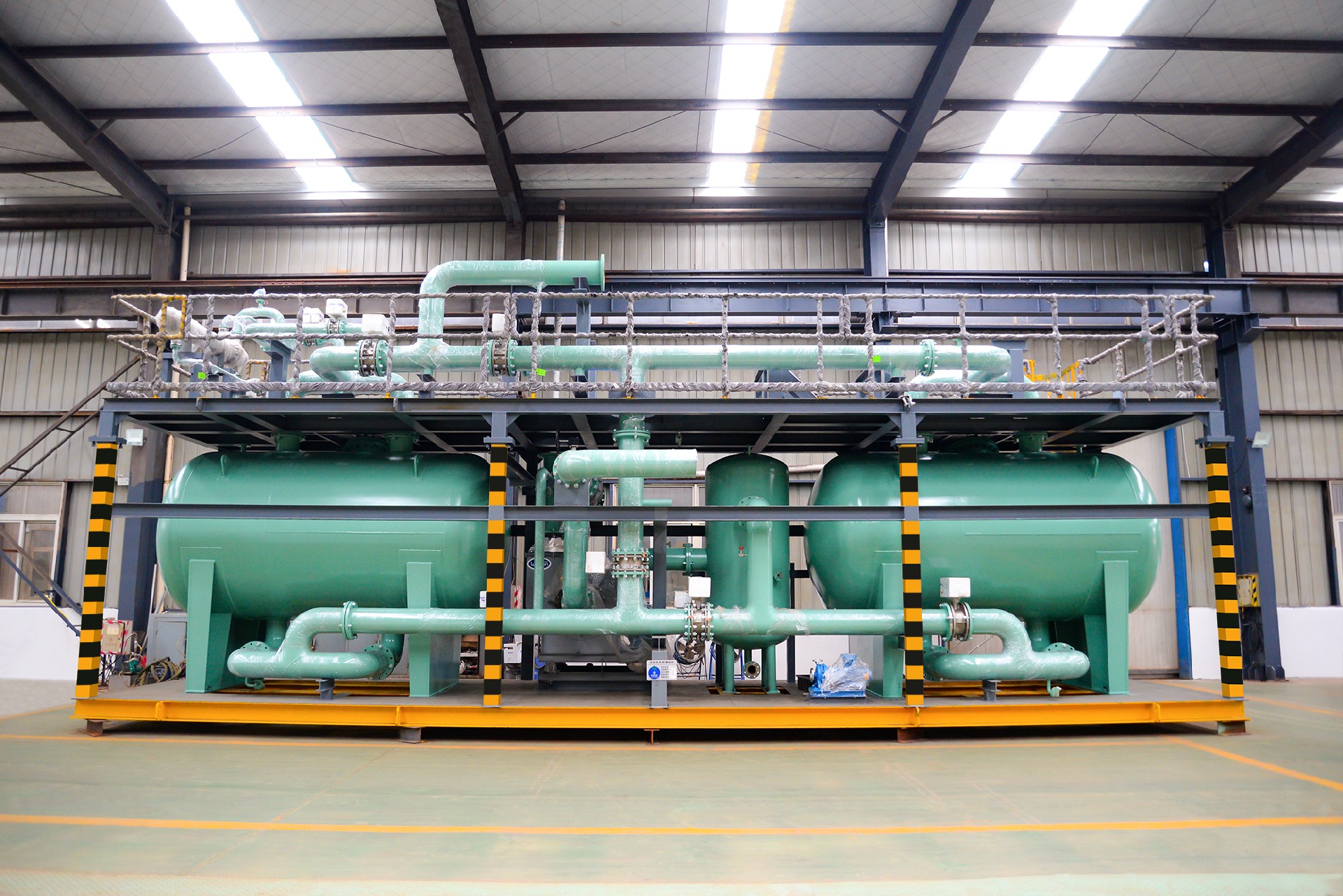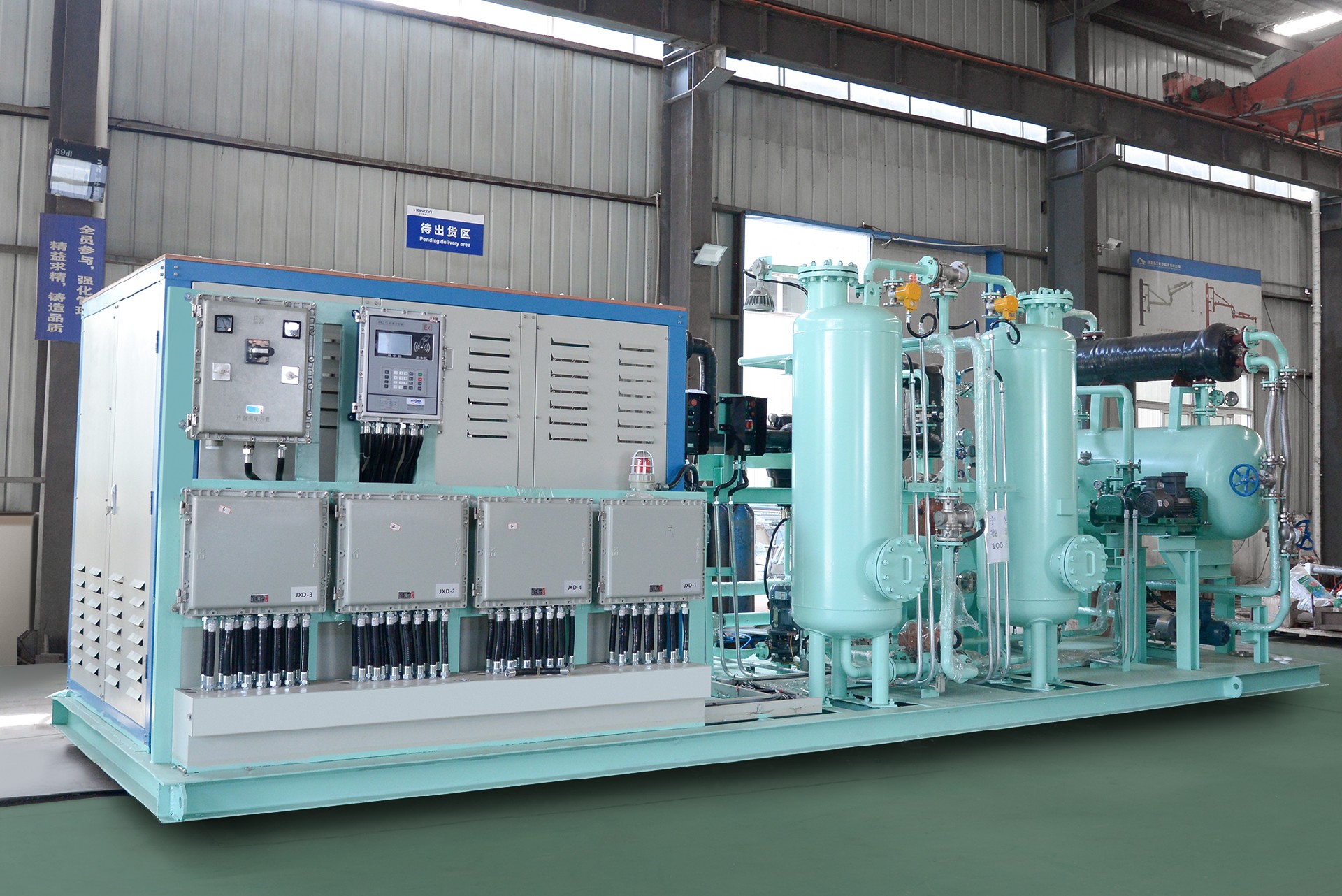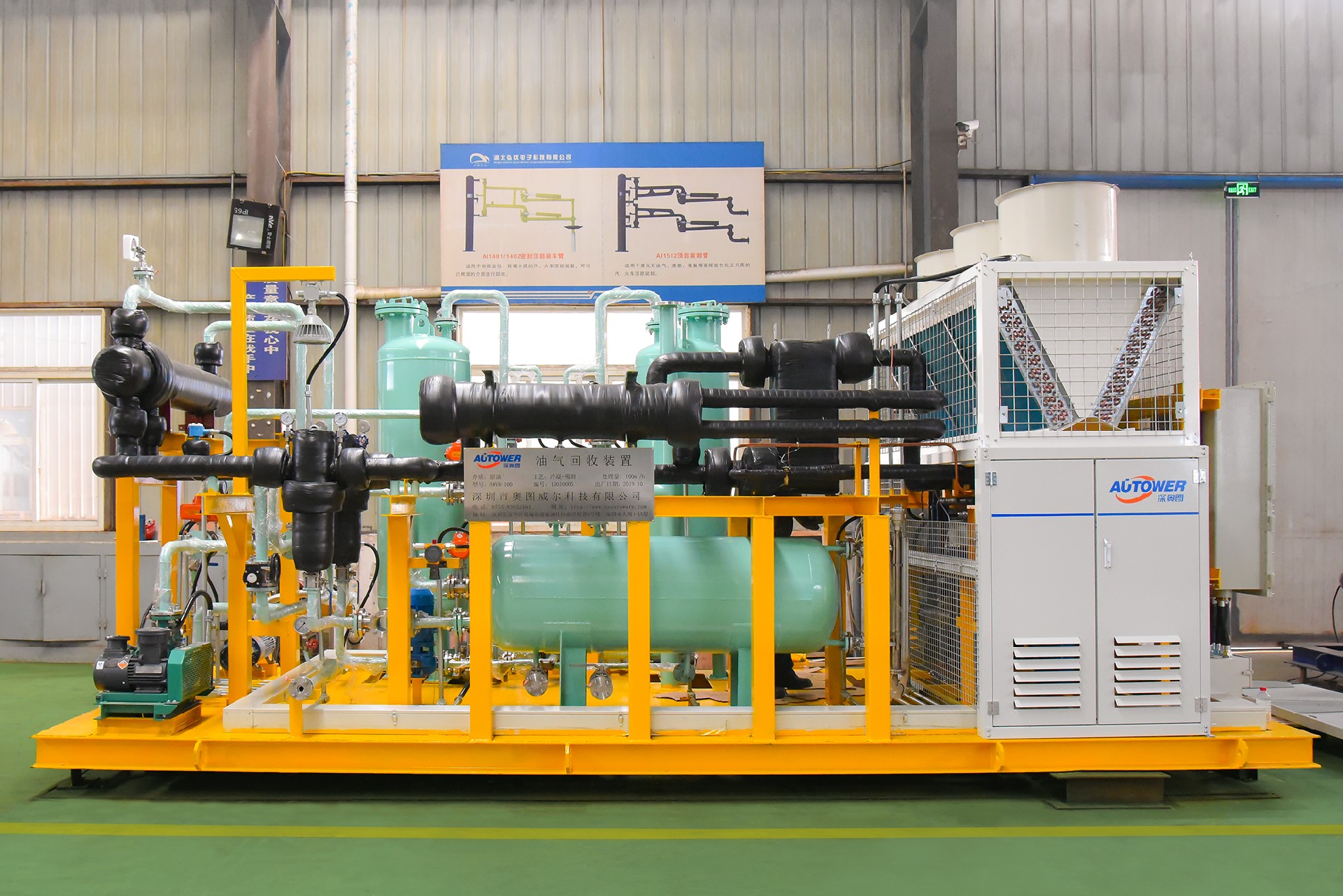Oil storage depot (tank truck) vapor recovery system method
The process of volatilization of oil and gas in oil storage depots can be divided into three stages, namely, unloading, oil storage and oil sending.Although there are oil and gas emissions in each stage, there are certain differences in emissions. Normally, the volatilization of oil and gas in the oil storage stage is called small respiration, and the volatilization of oil and gas in the oil harvesting and oiling stages is called big respiration.
 In order to control the volatilization of oil and gas in the process of gasoline production, oil vapor recovery and treatment devices are generally used to control the pollution of oil and gas to the environment.That is, an oil and gas treatment device is installed at the end of the oil and gas return pipeline, and the oil and gas are processed through the equipment, so that the purified gas is discharged into the atmosphere and meets the GB20950-2007 "Oil Storage Depot Air Pollutant Emission Standard".
In order to control the volatilization of oil and gas in the process of gasoline production, oil vapor recovery and treatment devices are generally used to control the pollution of oil and gas to the environment.That is, an oil and gas treatment device is installed at the end of the oil and gas return pipeline, and the oil and gas are processed through the equipment, so that the purified gas is discharged into the atmosphere and meets the GB20950-2007 "Oil Storage Depot Air Pollutant Emission Standard".
 There are several commonly used oil vapor recovery systems for tank trucks, and an introduction to several methods of oil vapor recovery processing methods:
There are several commonly used oil vapor recovery systems for tank trucks, and an introduction to several methods of oil vapor recovery processing methods:
(1) Adsorption method
Activated carbon adsorption devices are currently widely used in several large oil depots of Shanghai Sinopec. The mixed gas of oil and gas is separated from the condensate carried by the separator tank, and then enters the carbon bed in the adsorption state (two carbon beds switch work), the hydrocarbon gas is adsorbed by the activated carbon, and the purified gas is discharged into the atmosphere. The adsorption-saturated carbon bed is analyzed by vacuum, and then converted into liquid gasoline by absorption or other methods to realize oil and gas recovery. Because the activated carbon is frequently replaced, which can cost several tons per change, the operating cost is relatively high, and it is more suitable for enterprises with large oil output.
(2) Condensation method
The principle is to use the difference in vapor pressure of hydrocarbon substances at different temperatures to gradually reduce the temperature in a suitable temperature range, so that most of the released oil and gas vapor pressure reaches a supersaturated state, so that the supersaturated oil and gas are condensed and precipitated to form the recovered oil and gas of liquid gasoline. method. The disadvantage is that the lower the cooling temperature, the higher the recovery rate of gasoline evaporation, but it consumes a lot of energy in the cooling process.
(3) Membrane separation method
As a relatively new oil and gas recovery technology, the hydrocarbon-containing gas is pressurized and sent to the membrane separator. On the selective organic membrane, the oil and gas have higher permeability than air, and the hydrocarbon-containing gas is separated into two Stock logistics, oil-rich logistics and oil-poor logistics. The oil and gas in the rich oil stream is absorbed by the oil products, and the retentate of the lean oil and gas is discharged as purified gas after being reprocessed to reach the standard.
 Comparison of the effects of adsorption method and condensation method:
Comparison of the effects of adsorption method and condensation method:
The investment comparison between the adsorption method and the condensation method is basically the same, but within a reasonable investment and energy consumption range, the condensation method can easily meet the emission target of less than 10g/m3, and the investment and operating costs will increase significantly. The adsorption method is more difficult to meet the emission target of less than 25g/m3, and there are also potential safety hazards.
Several oil and gas recovery processes have their own advantages and disadvantages. Therefore, only a combination of several processes and each complementing each other can make better use of the advantages of various processes.


 EN
EN
 RU
RU


